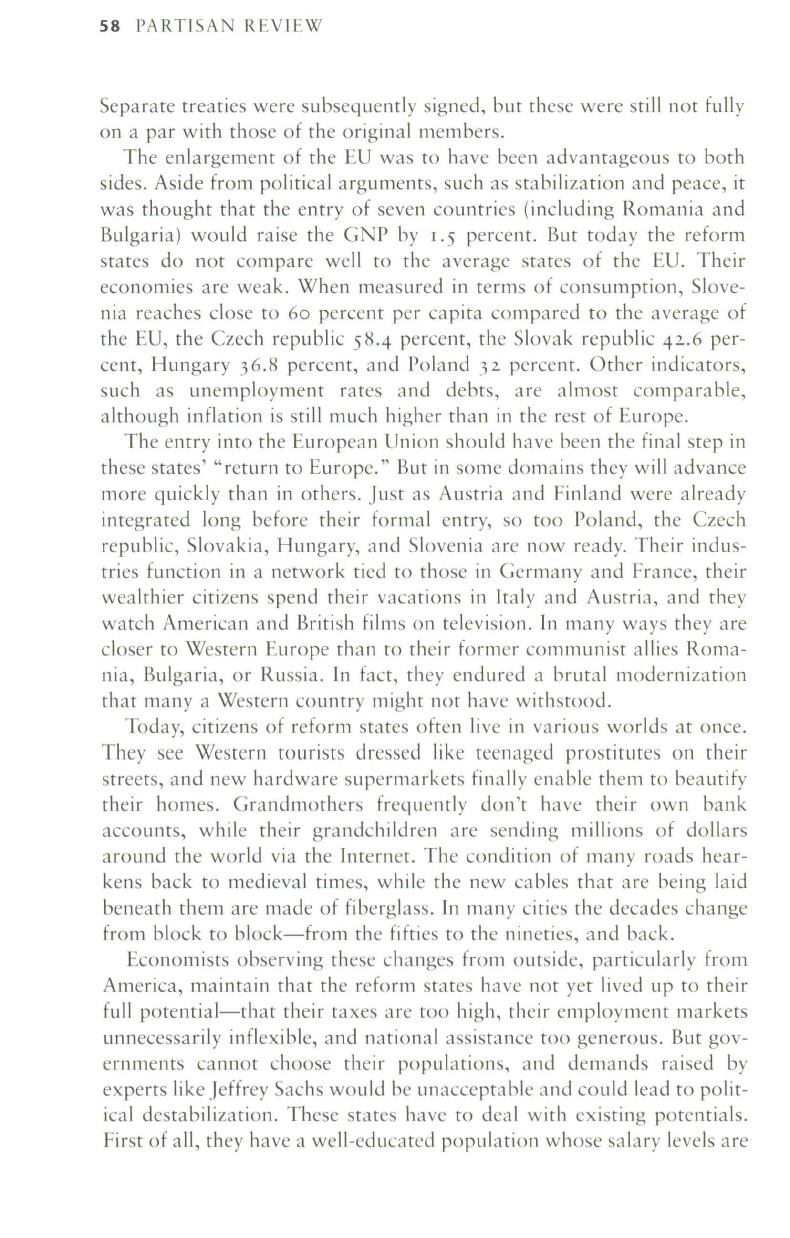
58
PARTISAN REVIEW
Separate treaties were subsequently signed, but these were still not fully
on a par with those of the original members.
The enlargement of the EU was to have been advantageous to both
sides. Aside from political arguments, such as stabilization and peace, it
was thought that the entry of seven countries (including Romania and
Bulgaria) would raise the GNP by r.5 percent. But today the reform
states do not compare well to the average states of the EU. Their
economies are weak. When measured in terms of consumption, Slove–
nia reaches close to 60 percent per capita compared to the average of
the EU, the Czech republic 58.4 percent, the Slovak republic 42.6 per–
cent, Hungary
36.8
percent, and Poland
32
percent. Other indicators,
such as unemployment rates and debts, are almost comparable,
although inflation is still much higher than in the rest of Europe.
The entry into the European Union should have been the final step in
these states' "return to Europe." But in some domains they will advance
more quickly than in others. Just as Austria and Finland were already
integrated long before their formal entry, so too Poland, the Czech
republic, Slovakia, Hungary, and Slovenia are now ready. Their indus–
tries function in a network tied to those in Germany and France, their
wealthier citizens spend their vacations in Italy and Austria, and they
watch American and British films on television. In many ways they are
closer to Western Europe than to their former communist allies Roma–
nia, Bulgaria, or Russia. In fact, they endured a brutal modernization
that many a Western country might not have withstood.
Today, citizens of reform states often live in various worlds at once.
They see Western tourists dressed like teenaged prostitutes on their
streets, and new hardware supermarkets finally enable them to beautify
their homes. Grandmothers frequently don't have their own bank
accounts, while their grandchildren are sending millions of dollars
around the world via the Internet. The condition of many roads hear–
kens back to medieval times, while the new cables that are being laid
beneath them are made of fiberglass. In many cities the decades change
from block to block-from the fifties to the nineties, and back.
Economists observing these changes from outside, particularly from
America, maintain that the reform states have not yet lived up to their
full potential-that their taxes are too high, their employment markets
unnecessarily inflexible, and national assistance too generous. But gov–
ernments cannot choose their populations, and demands raised by
experts like Jeffrey Sachs would be unacceptable and could lead to polit–
ical destabilization. These states have to deal with existing potentials.
First of all, they have a well-educated population whose salary levels are


